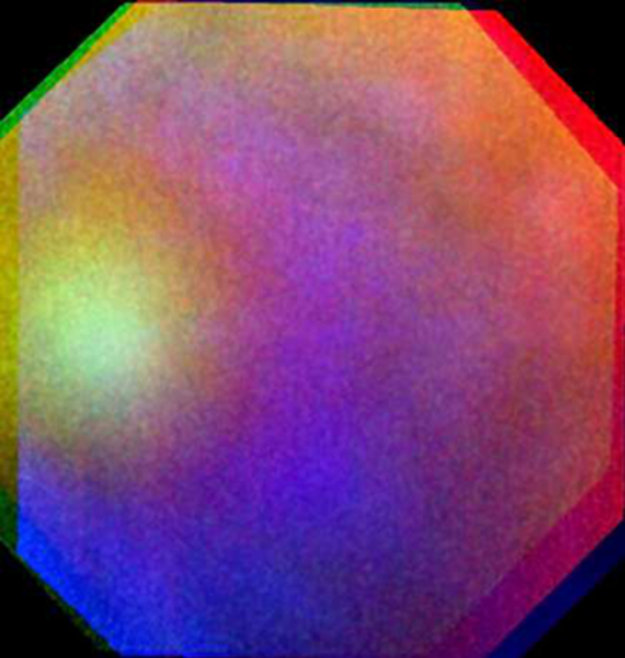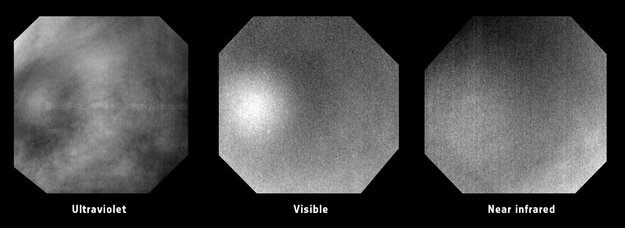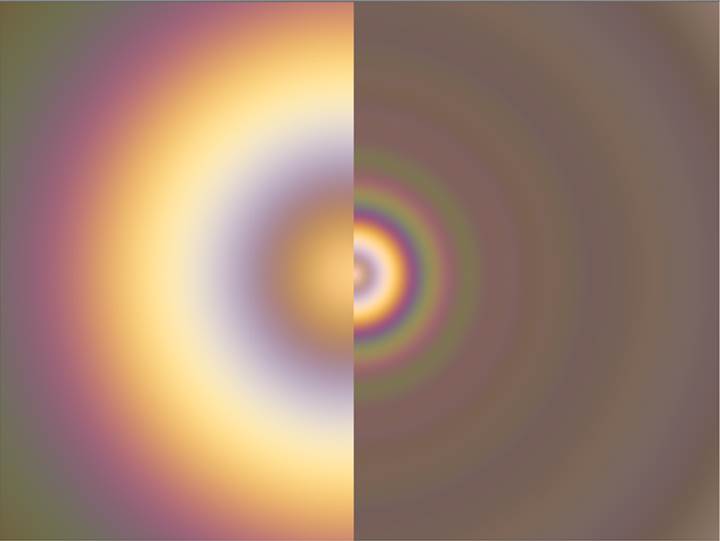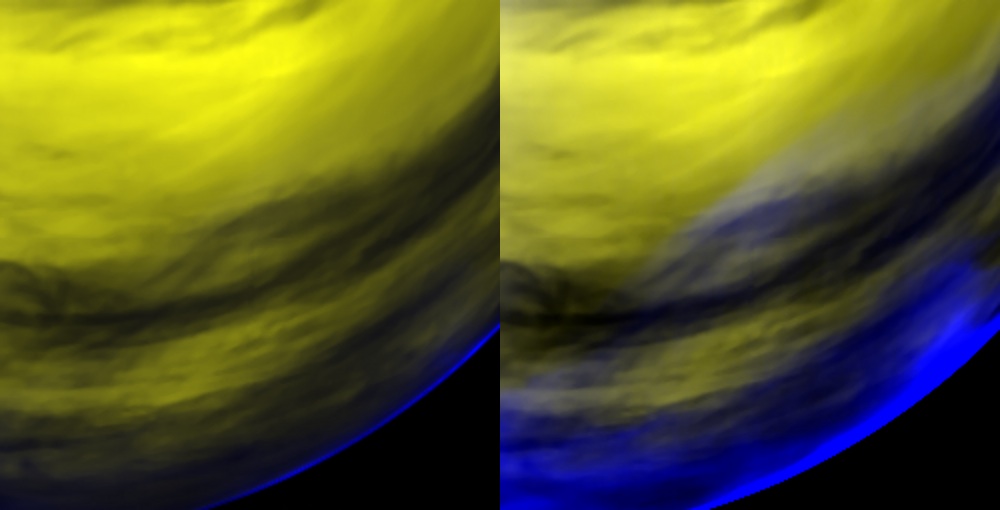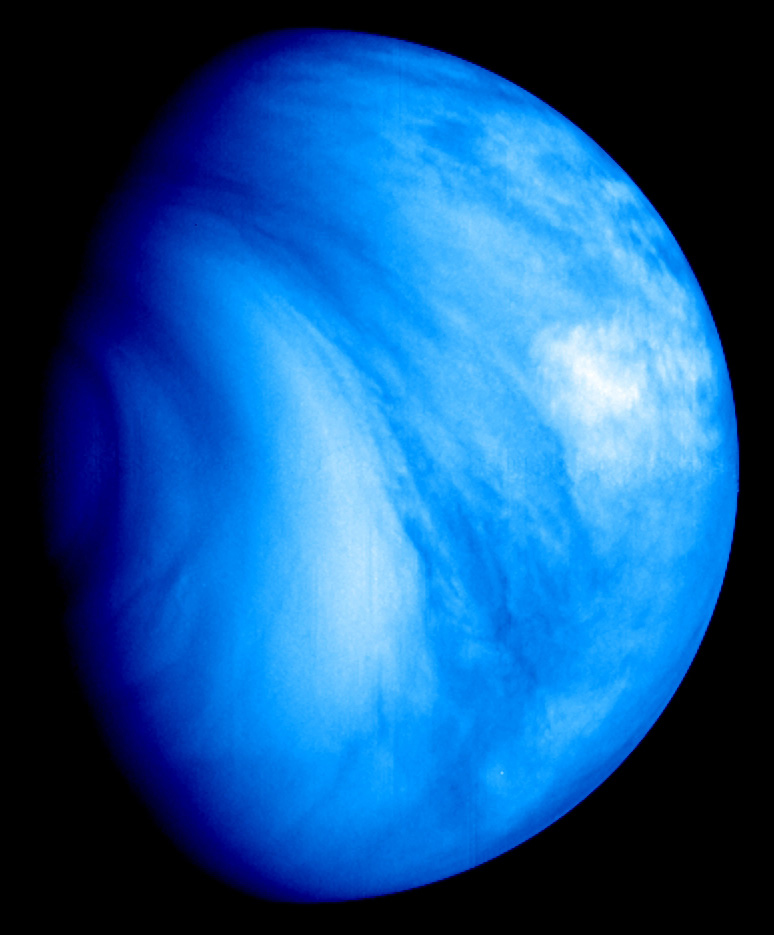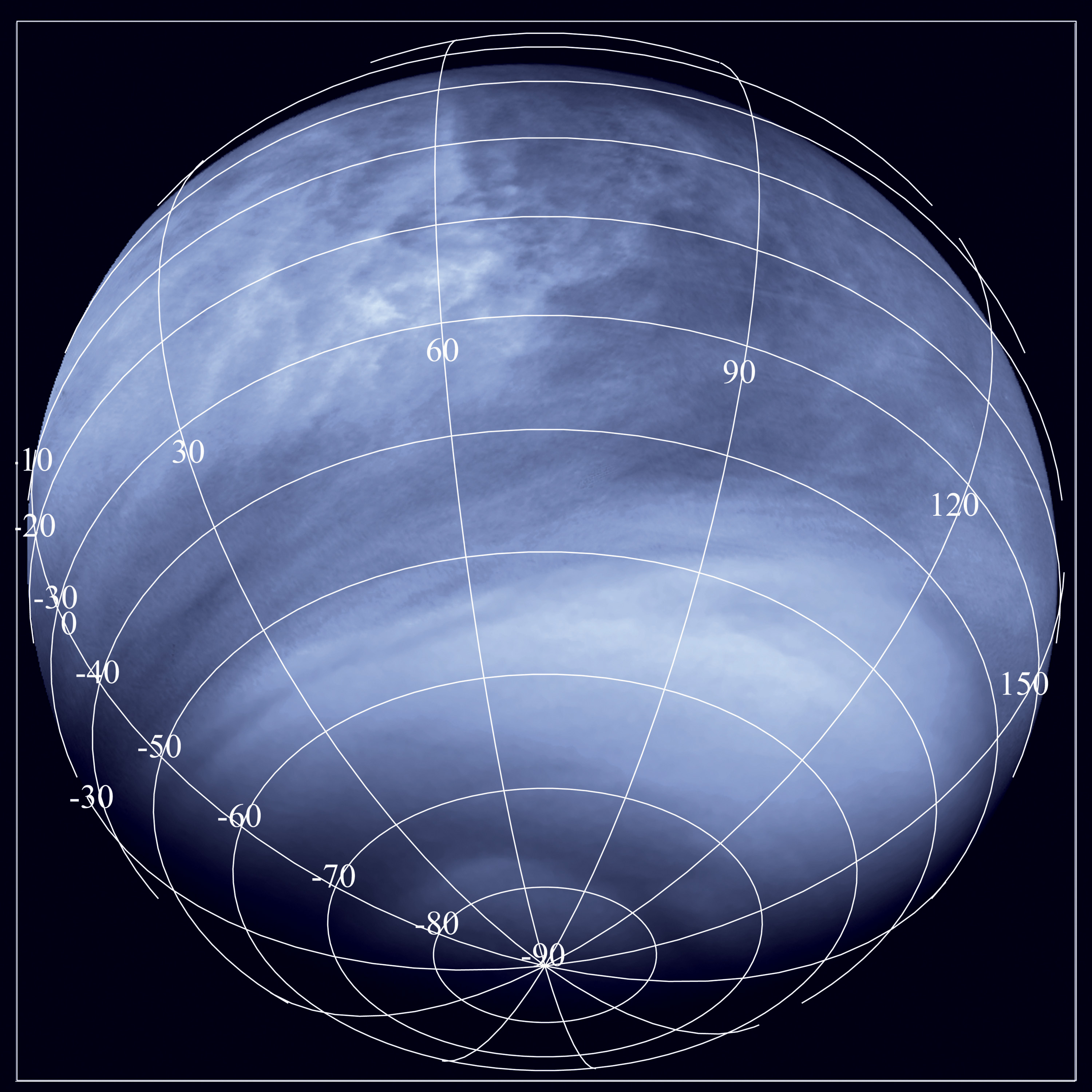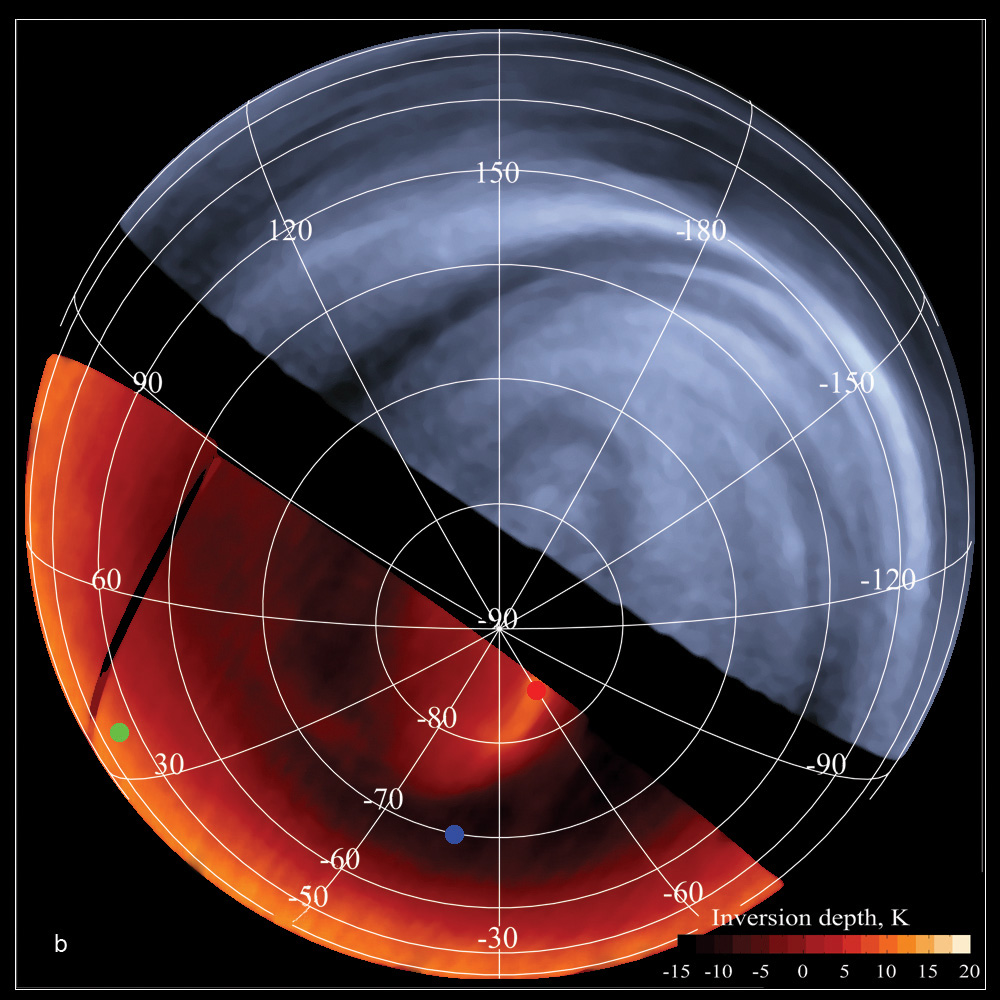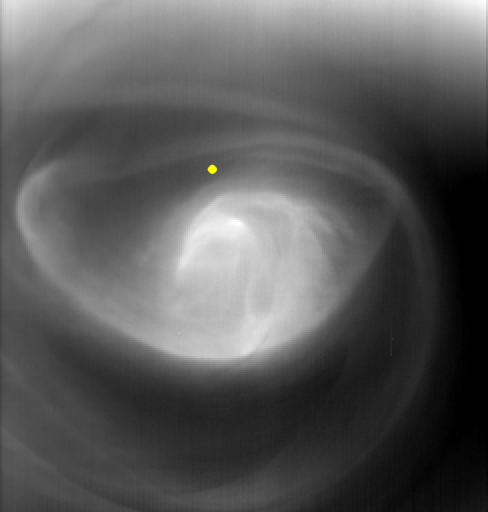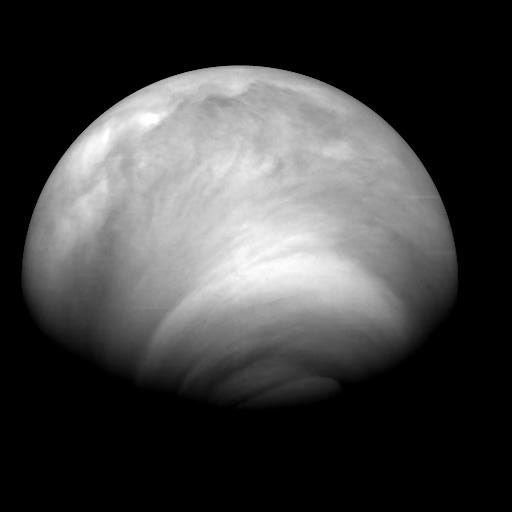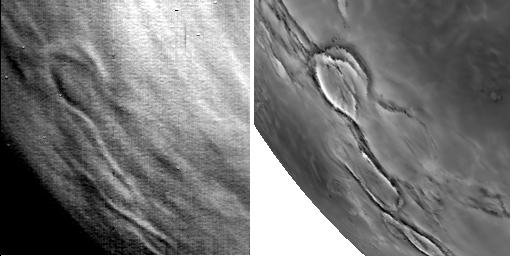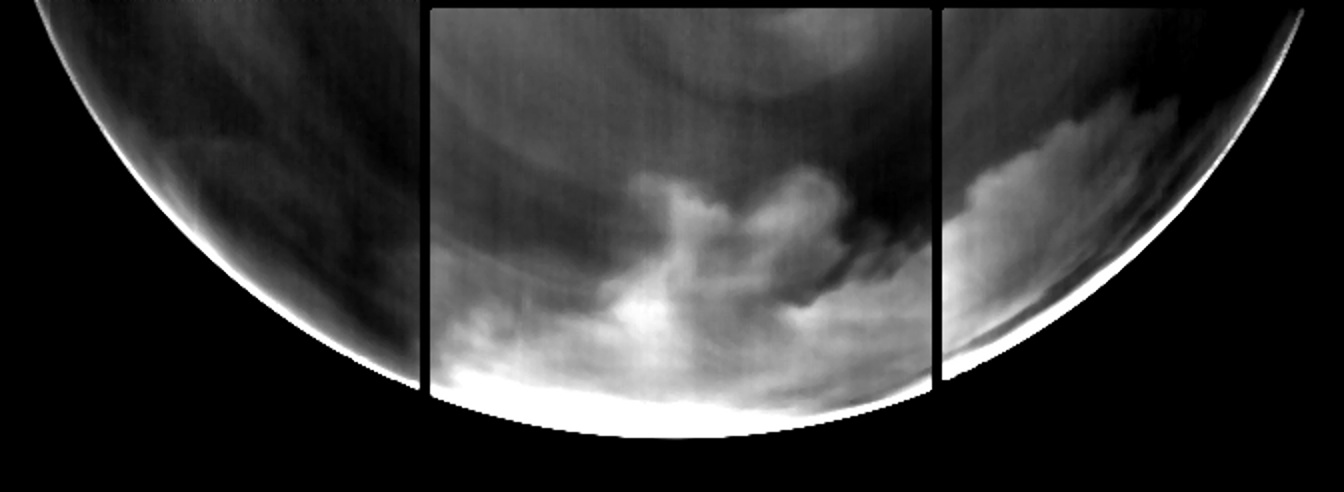Amazing Venus Photos by ESA's Venus Express
Venus 'Glory'
A false-color composite image of a "glory" seen on Venus July 24, 2011. The picture combines ultraviolet, visible and near-infrared wavelength images from the Venus Monitoring Camera aboard ESA's Venus Express. The glory was about 1,200 kilometers (746 miles) across.
Three Images of a Venus Glory
Three images of a glory spotted on Venus July 24, 2011. From left, ultraviolet, visible and near-infrared images from the Venus Monitoring Camera aboard ESA's Venus Express. The glory was about 1,200 kilometers (746 miles) across.
Simulated Views of a Glory on Venus and Earth
Venus (left) and Earth (right), not taking into account changes due to haze or background cloud. Glories happen when sunlight shines on cloud droplets. The difference seen between the two planets is mainly due to the tiny droplets found on Venus – just 2 thousandths of a millimetre across – compared to 10 thousandths to 40 thousandths of a millimetre on Earth.
Zoom-in on Venus’ Oxygen Airglow
These panels show the oxygen airglow in the night-side atmosphere of Venus, fully detectable only at specific infrared wavelengths. This false-colour view was obtained on Aug. 26, 2006 by the Visible and Infrared Thermal Imaging Spectrometer (VIRTIS) onboard ESA’s Venus Express, at a distance of 65,000 kilometres from Venus’ surface, from the south. The horizon seen at the bottom-right in both panels is about Venus’ equator.
Venus’ Southern Hemisphere in the Ultraviolet
This image shows the full view of the southern hemisphere from equator (right) to the pole. The south pole is surrounded by a dark oval feature. Moving to the right, away from the pole and towards the equator, we see streaky clouds, a bright mid-latitude band and mottled clouds in the convective sub-solar region. This image was taken on July 23, 2007.
Venus in the Ultraviolet
With data from Venus Express, scientists have learnt that the equatorial areas on Venus that appear dark in ultraviolet light are regions of relatively high temperature. In contrast, the bright regions at mid-latitudes are areas where the temperature in the atmosphere decreases with depth.
Venus in the Ultraviolet and the Infrared
The lower left of this image shows a differential temperature map (not absolute values) of the venusian cloud tops, derived from the Visible and Infrared Thermal Imaging Spectrometer, VIRTIS, on the planet’s night-side. The darker the region, the colder the cloud tops.
Breaking space news, the latest updates on rocket launches, skywatching events and more!
Venus's Polar Vortex
This image, of the ‘eye of the hurricane’ on Venus was taken by the Visible and Infrared Thermal Imaging Spectrometer (VIRTIS) on board Venus Express.
During Venus Express Orbit Number 465
This is a picture of Venus’s atmosphere, taken by the Venus Monitoring Camera (VMC) during Venus Express orbit number 465 on July 30, 2007. The view shows the southern hemisphere of the planet.
Thermal and Radar Maps of Venus’ Surface Compared
An unprocessed thermal map of the Venusian surface obtained by VIRTIS on June 5, 2007 (left) is compared here with a radar image of the same area obtained by NASA’s Magellan spacecraft in the 1990s (right).
Oxygen Makes Venus Glow at Night
The image shows the oxygen airglow in the night-side of Venus, appearing as the bright features similar to ‘clouds’ visible at the bottom of the image, and also visible as the white ring surrounding the planet’s disk (limb). This grey-scale image was taken on June 3, 2006.

Space.com is the premier source of space exploration, innovation and astronomy news, chronicling (and celebrating) humanity's ongoing expansion across the final frontier. Originally founded in 1999, Space.com is, and always has been, the passion of writers and editors who are space fans and also trained journalists. Our current news team consists of Editor-in-Chief Tariq Malik; Editor Hanneke Weitering, Senior Space Writer Mike Wall; Senior Writer Meghan Bartels; Senior Writer Chelsea Gohd, Senior Writer Tereza Pultarova and Staff Writer Alexander Cox, focusing on e-commerce. Senior Producer Steve Spaleta oversees our space videos, with Diana Whitcroft as our Social Media Editor.
